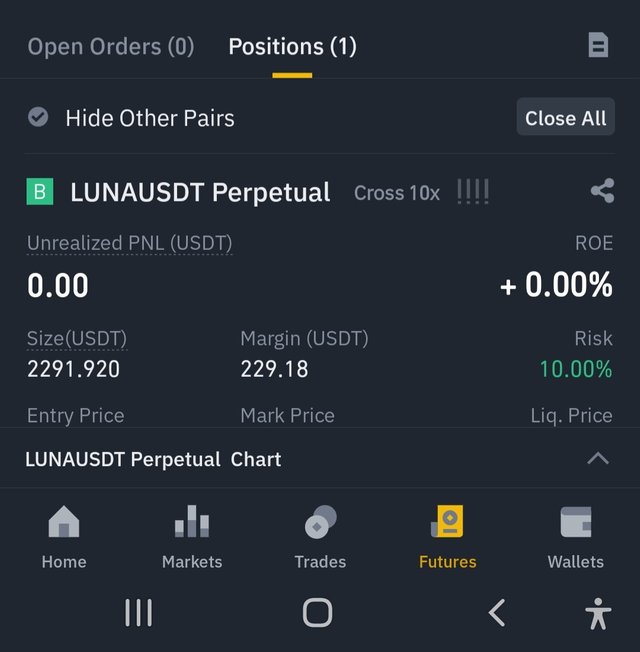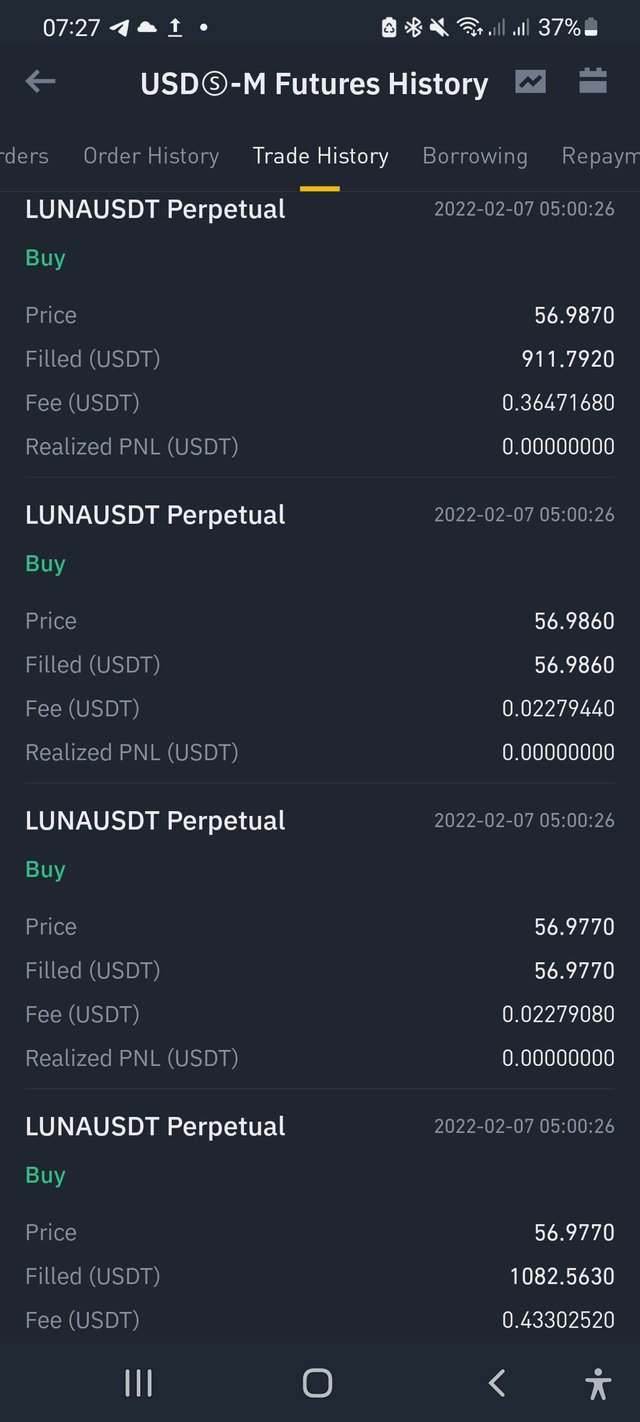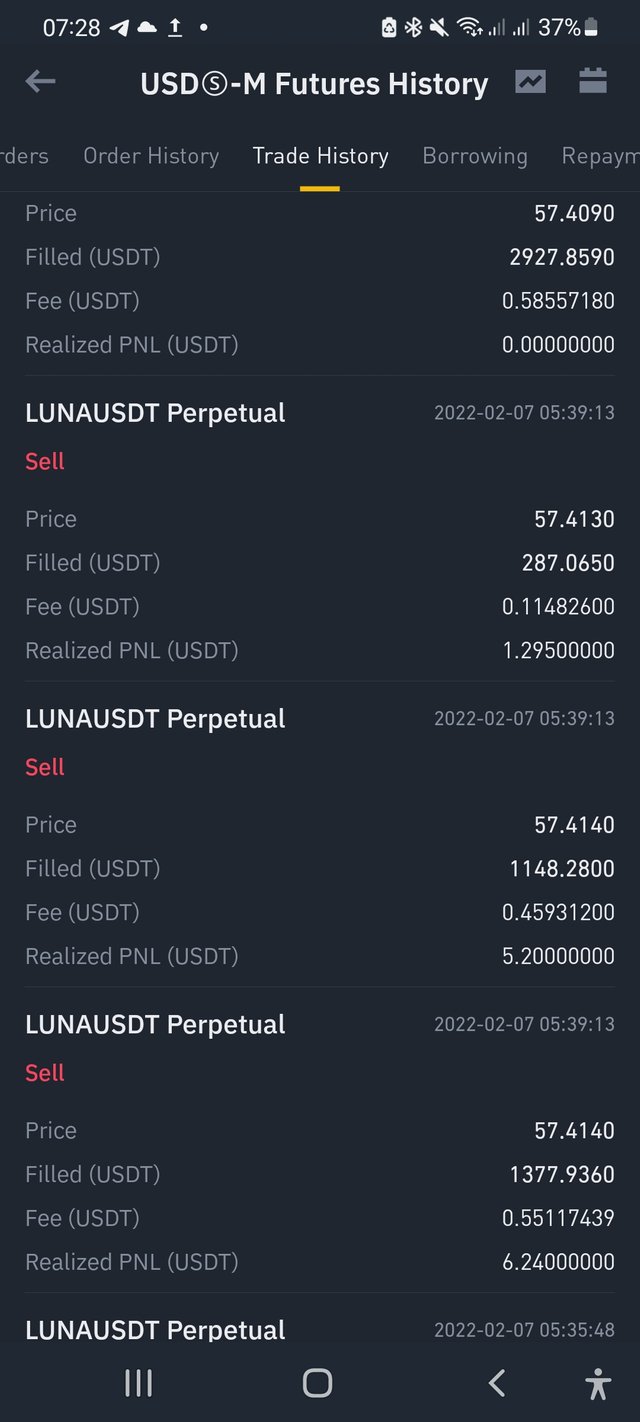[Leverage With Derivatives Trading Using 5 Min Chart ]-Steemit Crypto Academy | S6W1 | Homework Post for @reddileep


Introduction

Trading, one industry that has been existing for long time where traders buy and sell commodities, stocks, bonds, and cryptocurrency. While trading can be done with with one owns funds/capital, tradings can be done with other peoples funds which is known as leverage.
A lot of traders and investors trade securities with their cash and with this, they require a lot of funds to trade and at such would only gain or lose whatever ever amount is put into trade. The need for leverage becomes very important as traders look into getting more profit from their trades with their limited capital. With this, What is Leverage?

Introducing Leverage Trading

In simple words, Leverage is the borrowing of money for a trade in other tot increase the trading power of the trader thereby beyond the normal trading power of the trader. In general, this funds are borrowed from the broker in terms margin.
Leverages can go up to 100:1, depending on the brokers, meaning that for every $1, the trader can trade with up to $100. With this, the trader increases their trading power. Trading a leverage market is what interest traders as the market is very liquid compared to the spot market which traders trader and there is little liquidity. Leverage trading is a two edge sword having its good side which is beneficial to traders as well as its bad side which can be detrimental to the trader ans their funds.

Benefits of Leverage Trading

There are numerous benefit of trading with leverage and these benefits include not not limited to;
More Trading Power: With leverage, traders can increase the power of their trade thereby giving the trader more access to trade opportunity. If a trader has $20 in their trading account, without leverage, the trader would be able to trade only with the $20 but with leverage of 100X, the trader would be able to trade up to $2000 thereby increasing the trading power of the trader.
Amplified profit: If all technical analysis and fundamentals are properly followed, and the trade goes in the favor of the trader, the profit from leverage trades are amplified (meaning that instead of a trader with $20 to make a profit of their capital from a trade, the trader would make a profit from a trade of $2000, if the trader uses a leverage of 100X).
Take Profit and Stop Loss can be easily triggered: When trading with leverage, traders can easily take profit when they have gotten to the desired profit as well as stop loss when the trade isn't going in the right direction of the trade.

Disadvantages of Leverage Trading

High Leverage Increased Loss: Unlike trading on spot where the traders trade with their funds, with leverages, funds are borrowed and this magnifies both the profit and losses when trading. Just like it increases the profit, so does it increase the loss making it very fast with liquidation.
Increased fees for leverages: When borrowing funds from the brokers the brokers charges a fee for borrowing the funds to the traders either there is a profit or a loss and in the cases of a loss, the trader would find the fees frustrating.
Quick Liquidation: Due to its high risk, traders can lose a lot of funds and when it happens that the trader forgets to stop-loss, the trader could liquidate thereby losing all their investment.

Basic Indicators used in Leverage Trading?

Asides trading leverages, it is important that technical traders trade using technical analysis and tools, one of which indicators are. When trading leverages it is important to trade with indicators which basically explains the trend of tthe market. A few indicators to look out for when trading leverage are; Moving Averages (MA), Moving Average Convergence and Divergence (MACD), Relative Strength Index (RSI) and many more.
- Moving Average (MA)
Moving Averages are trend indicators which appear in straight lines along the chart bar/sticks. The line is used to identify when a chart is in a trend depending on the period of the Moving average. A 20-MA to 50-MA is used to identify shorter movement of the chart, a 50-100 MA is used to identify medium chart movement while 100-200 MA is used to identify long term chart trend movement. When the chart is above the MA, it is believed to be in an uptrend, if the chart is below the Moving Average, it is believed to be in a downtrend and when the MA is in between the chart, it is believed that the chart is a sideways trend with no specific movement in a direction.

- Moving Average Convergence and Divergence (MACD)
While MACD is a trend indicator as well as a momentum indicator. it isn't visible in the chart, rather it is on a default below the chart since it is an oscillator indicator with a band. The MACD fluctuates upwards and downwards the zero line in the histogram, thereby predicting the trend of a particular trade.
When the MACD line is above Zero for a certain period, it is clear that the market is trading in an uptrend and when the MACD line is below Zero for a given period, it is clear that the trade is in a downtrend. MACD has two lines, the MACD line and the Signal line. In most cases, the MACD line is blue and the signal line is yellow, when the signal line is above a MACD line, a sell signal is called an when the MACD line is above the signal line, a buy signal is called.

- Relative Strength Index (RSI)
RSI is an oscillating indicator used to identify trends in a chart. it has its line which moves from 0 to 100. RSI can be used to identify an overbought or oversold in a chart. When the RSI is at 70, it is regarded as overbought, and it is regarded as oversold when the RSI line is below 30. The price could go above 70 when the trend is going upwards in a high momentum and below 10 when the trend goes further downwards. When RSI is oversold, there is a high chance to get a reversal to an uptrend and when RSI is overbought, the price would possibly have a reversal downwards.


How to perform Leverage Trading using special trading strategies (Trading Practice using relevant indicators and strategies, Screenshots required)

When trading, two things are important, the strategy used in trading and financial management. When it comes to financial management when trading with leverages, I usually advice that traders do not go above 5x, conservatively, i usually advice that traders trade with 3x and do not lose above 3% of their capital to a trade (although, there are certain times when stop-loss can be shifted if the trader has a complete assurance that the market will reverse). Also, I always advice a leverage trader never to pick a trade based on a higher time-frame reading. It is to know the market reading for higher time-frame but it is important to enter trade based on a 5 minutes to 30 minutes trade as every pip and movement affects your capital since you already used leverage. Every higher time frame candlestick has more candlestick movements in its smaller time frame.
After explaining the money management basis, although there are more things to consider, but i am not looking into this now, I will look into a trading strategy that is very important and has had a lot of success rate. While I have been trading leverage and futures trading, this was one of the early strategies i learnt and although I barely use it now since have more complex and effective strategy, this strategy still remains very good with high success rate.
The strategy involves using 2 moving averages with one having a lower period (short term),and the other having a higher period (Medium term). When the lower period MA crosses above the higher period MA, a buy signal is triggered. When the higher period crosses above the lower period MA (20), a short/sell signal is triggered.



To further add the Parabolic SAR to this strategy, it will be used to confirm an entry after the signal has been placed by the MA. When the Parabolic SAR is upwards, it indicates a downward trend, and when the Parabolic SAR is below the price, then it is an uptrend. The Screenshot below shows the use of Parabolic SAR to confirm the trade.



While I do not advice that beginner traders should trade with a real account or use high leverages, the assignment requires using a live account and so it is advisable to trade with an amount that you can lose (One of my rule is never risk a trade with an amount that will give you sleepless night and worry). I will be using the 9 and 25 MA to determine the signal of this trade. In this trade.



Entering a buy order at $56.977 and a Take profit at $57.414 and stop loss at $56.7




Conclusion

There is no 100% trading strategy meaning that trades will fail, even the best trader still loses money, it is important that while trading, traders are disciplined with a goal and a solid strategy that works. Trading leverage can be very risky and all funds of a trader can be lost in one or few trades if there is no proper trading management. it is important to trade with caution and know what you are doing as a trader when trading leverage.